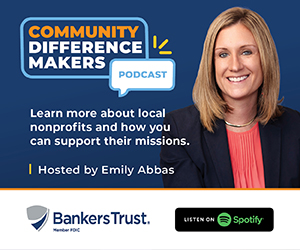Owen’s passion for diamonds will last forever

Bruce Owen went about a half-mile below the Earth’s surface to find the sparkle his customers lust after.
The owner of AmeriGem, a non-traditional retail jewelry store that cuts overhead to deliver higher-quality jewelry to its customers, returned recently from a tour of South African diamond mines, which produce 70 percent of the largest diamonds in the world. Owen had gone there at the invitation of DeBeers SA, the world’s largest diamond mining company, which became a household name with its “A Diamonds is Forever” marketing campaign. Through its system of sightholders, an elite cadre of 84 dealers selected to buy and market rough stones, DeBeers controls more than 60 percent of worldwide diamond production.
When Owen returned to the United States, he brought with him an agreement with one of the DeBeers sightholders, Johannesburg-based FestDiam Cutting Works, to supply AmeriGem with private-label diamonds. FestDiam is the world’s largest family-owned sightholder in the world, and family members still oversee the cutting and polishing on the factory floor.
The diamonds FestDiam will provide have a hallmark of quality inscribed along the girdle, the area between the crown and pavilion, that includes a personal security code, and also provides assurance to customers that the gems are “conflict free.” That is, they did not originate in a war-torn regions, such as the African nations of Sierra Leone, Liberia, Congo, Angola, Ivory Coast and Burkina Faso, where the illicit trade in raw diamonds is commonly used to fund rebel or terrorist groups.
That’s important to Owen, whose personal code of ethics rejects profiting from violence inflicted on others. “Any time you support violence, people being hurt, killed or dismembered for any reason …,” he said, his voice trailing off.
Though major U.S. and international diamond retailers have pledged to help prevent the sale of “conflict” or “blood” diamonds through a self-regulatory system, some are still making it to the marketplace, according to the international human rights organization Global Witness. In a report issued last month, the group said “major players in the U.S. diamond jewelry retail sector, which accounts for over half of global diamond jewelry retail sales, are not carrying out the basic steps of a self-regulation which aims to stop the trade in conflict diamonds.” Global Witness surveyed 30 retailers in Los Angeles, Miami, New York and Washington, D.C., including luxury jewelers, national department stores, national jewelry chains and independent jewelry stores.
Owen said the arrangement with FestDiam gives him confidence the diamonds he sells are conflict-free. Some customers specifically ask about the origin of diamonds, while others aren’t necessarily aware of the controversy.
“A few people have heard about it, but a lot have no clue,” Owen said. “Young kids coming out of college have studied it, and they are concerned.”
The trip itself was revealing for Owen, who parlayed his passion for jewelry into a business that caters to customers’ individual needs. He says typical retail jewelry stores often try to sell to customers based on their need to reduce inventory, giving customers no assurance that they are buying the best stones available. AmeriGem, on the other hand, is a “personal diamond broker,” Owen said. He and his staff work with customers to find the diamond customers want at a price they can afford, then search worldwide to meet their needs.
“To see the steps and the processing equipment used one-half mile below the surface, to see the diamonds brought out and the people who do the work gives you a whole new perspective of their value,” said Owen, who admits to frustration when he hears a reference to diamonds as “just polished rocks.”
“They are beautiful polished rocks,” he said, “but not ‘just’ polished rocks.”
Owen said he developed a new appreciation for the importance of the diamond industry to South Africa, where unemployment hovers around 33 percent.
“It’s livelihood,” he said. “It’s the well-being of a country.”
ORIGIN OF DIAMONDS
Under immense heat and pressure, diamonds crystallized and were brought to the Earth’s surface through volcanic explosions of magma. This magma cooled and solidified as kimberlite ore, an igneous rock in which where rough diamonds are still found today, in some of the most inaccessible places on the planet. On average, each 30 tons of kimberlite ore yields 1 carat of diamonds.
Diamonds were first discovered 4,000 years ago in the riverbeds of the Golconda region of India. They had been eroded from the primary deposits and washed into rivers. Some made it as far as the coast or even the seabed. Today, most diamonds come from primary deposits. The 1866 discovery of massive diamond deposits in South Africa spurred a worldwide diamond rush. The South African diamond output remained unchallenged until about 1954, when major deposits were found in Siberian permafrost. Today, Western Canada is the site of the world’s newest diamond rush.
South Africa produced the largest diamond ever mined, a 3,106-carat rock that was found in 1905 and later cut into many smaller stones. The largest of them, “The Star of Africa,” is part of the British crown jewels.
The largest, purest diamonds are found near the Earth’s surface, but they are becoming more rare. As a result, miners are going deeper below the surface. Only one-fifth of all diamonds mined actually end up in jewelry.







